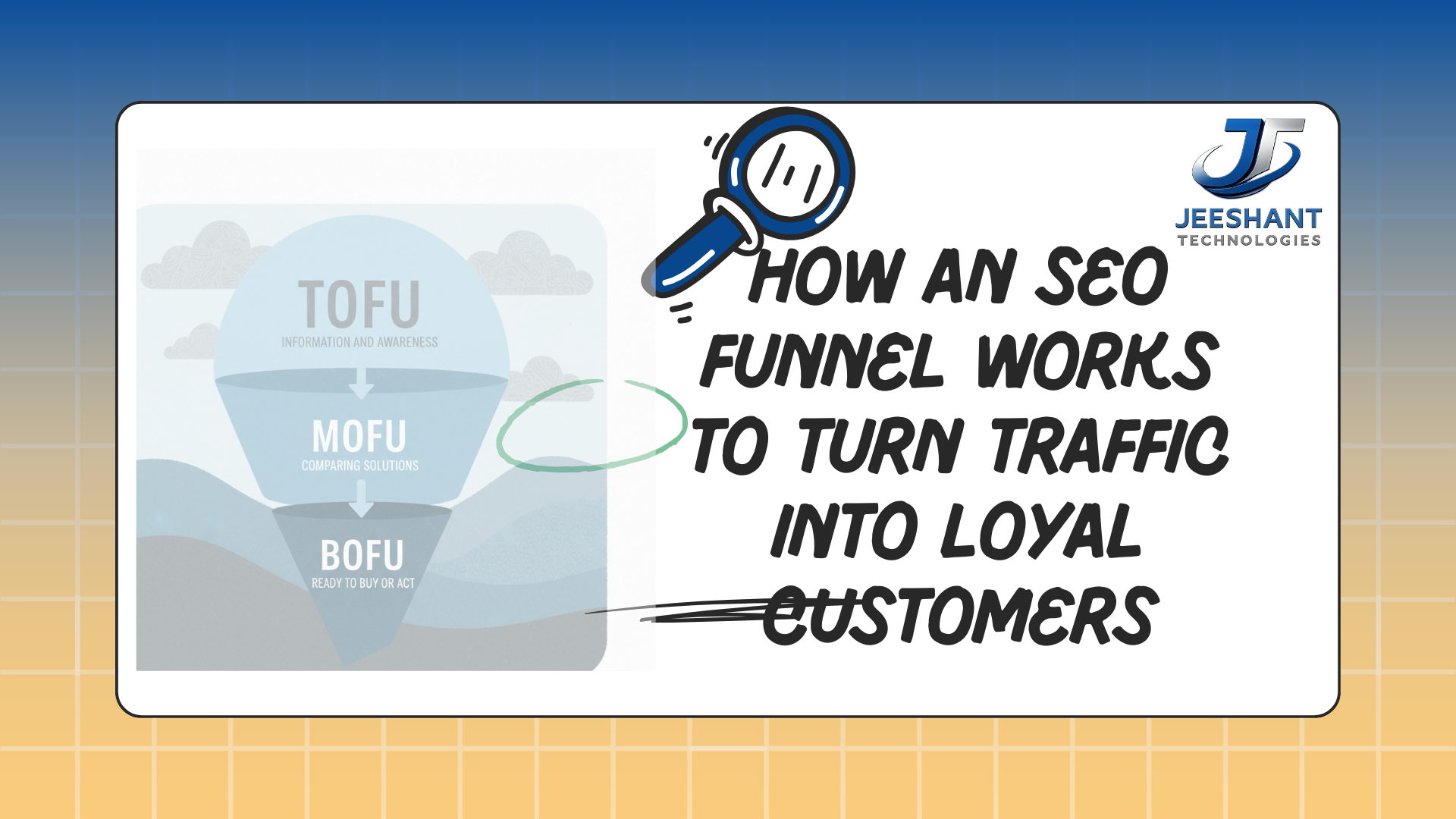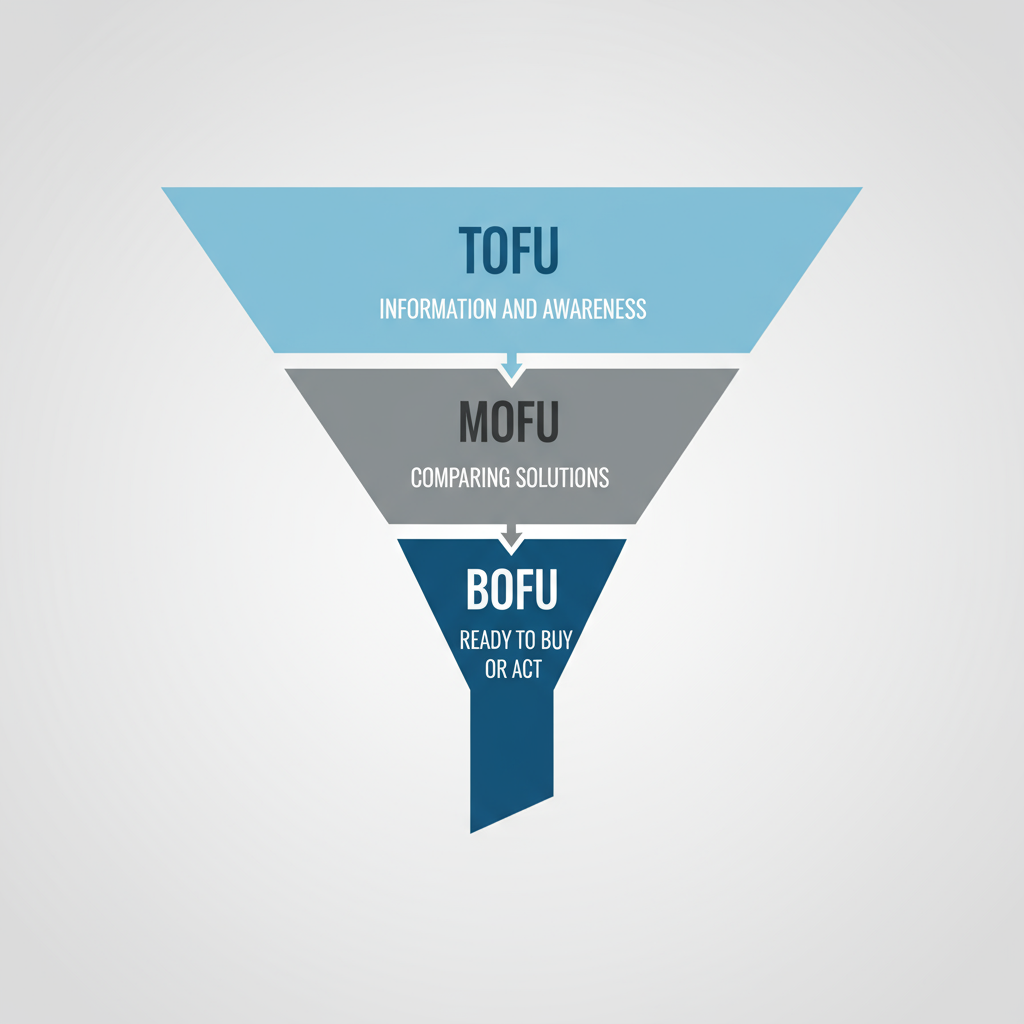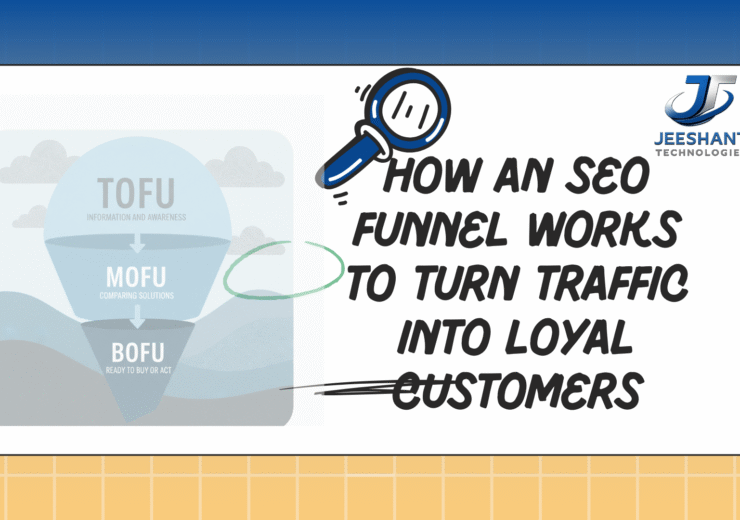How an SEO Funnel Works to Turn Traffic into Loyal Customers

Search Engine Optimization (SEO) is no longer just about ranking high on Google—it’s about understanding your audience’s journey, guiding them through each stage of discovery, and ultimately converting them into paying customers. This is where the SEO funnel comes into play.
An SEO funnel is a framework that aligns your SEO strategy with the buyer’s journey. It helps you attract visitors at different stages—awareness, consideration, and decision—and ensures that your content and website architecture lead them smoothly toward conversion.
In this blog, we’ll break down what an SEO funnel is, why it matters, how to create one, and practical strategies to optimize it.
What is an SEO Funnel or the Content Marketing Funnel?
An SEO funnel, also known as a content marketing funnel, is a framework that aligns content with the buyer’s journey. It is the process of guiding potential customers from the moment they discover your website via search engines to the point where they take a desired action—such as making a purchase, filling out a form, or subscribing to a newsletter. Each stage of the funnel—awareness, consideration, and decision—helps attract traffic, nurture leads, and drive meaningful conversions while also highlighting content gaps to optimize.
“A content marketing funnel enables content marketers to visualize how to leverage existing content to attract potential customers and guide them through their journey until they reach the end goal.” – Search Engine Journal
It mirrors the classic marketing funnel, but focuses specifically on organic traffic and search intent.
The SEO funnel guides users through three main stages of their journey before becoming customers:

Top of Funnel (TOFU): Users are looking for information and awareness.
Middle of Funnel (MOFU): Users are comparing solutions and considering options.
Bottom of Funnel (BOFU): Users are ready to take action—buy, sign up, or contact.
By aligning SEO strategies with this funnel, businesses can ensure they’re not just driving traffic, but attracting the right kind of traffic that’s more likely to convert.
Why is the SEO Funnel Important?
A well-designed SEO funnel is essential because:
- Improves Relevance: You’re not just chasing keywords—you’re creating content tailored to user intent.
- Enhances User Experience: Visitors can easily find the right content based on where they are in their journey.
- Drives Conversions: Instead of random traffic, you attract leads that are primed for conversion.
- Builds Trust: By educating at the top and offering solutions at the bottom, you position your brand as an authority.
- Supports Long-Term SEO Growth: A funnel approach ensures your SEO strategy has balance across awareness, engagement, and conversion.
Stages of the SEO Funnel
1. Top of Funnel (Awareness)
At this stage, users are looking for answers to their problems. They may not even know your brand exists. Your goal here is to attract and educate.
- User Intent: Informational
- Examples of Searches:
- “What is funnel marketing?”
- “Why does my website have low traffic?”
- “Best SEO strategies for beginners”
- “What is funnel marketing?”
SEO Strategies for TOFU:
- Target informational keywords with blogs, guides, and FAQs.
- Publish long-form content that establishes authority.
- Optimize for featured snippets (answer boxes).
- Use videos, infographics, and explainer content.
Content Examples:
- Ultimate guides
- Blog posts
- How-to articles
- Informative videos
Your TOFU goal is to attract attention and drive organic traffic, not to sell right away.
2. Middle of Funnel (Consideration)
Here, users are aware of their problem and are actively looking for solutions. They’re comparing different products, services, or approaches.
- User Intent: Navigational / Comparative
- Examples of Searches:
- “SEO funnel vs marketing funnel”
- “Best SEO tools for keyword research”
- “SEO services for small businesses”
- “SEO funnel vs marketing funnel”
SEO Strategies for MOFU:
- Target commercial intent keywords.
- Write comparison blogs (e.g., “Tool A vs Tool B”).
- Use case studies and whitepapers.
- Build internal linking between TOFU and MOFU content.
Content Examples:
- Case studies
- Webinars
- Comparison articles
- Downloadable resources (checklists, eBooks)
The MOFU stage is where you nurture leads by proving that your product or service is a serious contender.
3. Bottom of Funnel (Decision)
At this stage, the user is ready to make a purchase. They’ve compared options and are now looking for the best choice.
- User Intent: Transactional
- Examples of Searches:
- “Hire SEO agency in New York”
- “Best SEO consultant near me”
- “Affordable SEO packages”
- “Hire SEO agency in New York”
SEO Strategies for BOFU:
- Optimize product/service pages with strong CTAs.
- Create location-specific landing pages (local SEO).
- Publish testimonials and customer reviews.
- Use schema markup for ratings and pricing.
Content Examples:
- Service/product pages
- Pricing pages
- Client success stories
- Contact forms
At BOFU, the goal is conversion—turning a lead into a customer.
How to Create an SEO Funnel
Building an SEO funnel requires a step-by-step strategy:
Step 1: Define Your Audience
- Identify target demographics, pain points, and search behaviors.
- Use tools like Google Analytics, Ahrefs, or SEMrush for insights.
Step 2: Map Keywords to Funnel Stages
- TOFU: Broad, informational keywords (e.g., “what is SEO”).
- MOFU: Comparative and solution-based keywords (e.g., “best SEO tool for e-commerce”).
- BOFU: Transactional keywords (e.g., “hire SEO expert in [city]”).
Step 3: Create Funnel-Specific Content
- Build blogs, guides, and FAQs for TOFU.
- Use case studies and comparisons for MOFU.
- Optimize service/product pages for BOFU.
Step 4: Optimize for User Experience
- Use clear navigation and internal linking to connect funnel stages.
- Ensure fast-loading pages and mobile responsiveness.
- Provide clear CTAs at each stage.
Step 5: Track and Measure
- Use Google Search Console for keyword performance.
- Set up conversion tracking in Google Analytics.
- Monitor funnel drop-offs and optimize weak areas.
Practical Tips to Optimize Your SEO Funnel
- Leverage Content Clusters
Create pillar pages for TOFU and link them to more specific MOFU and BOFU pages. - Focus on User Intent
Don’t just stuff keywords—match your content with what the user truly seeks. - Repurpose Content Across Funnel Stages
Turn a TOFU blog into a webinar (MOFU) or case study reference (BOFU). - Incorporate Local SEO
Especially for service-based businesses, optimize BOFU pages with location-based terms. - Use Data to Refine Funnel
Identify which content pieces drive conversions and double down on them.
Example: SEO Funnel in Action
Let’s imagine an SEO agency building its funnel:
- TOFU: Blog post – “What is SEO and why does your business need it?”
- MOFU: Guide – “Top 10 SEO strategies for small businesses in 2025.”
- BOFU: Landing page – “Affordable SEO Services in New York – Book a Free Consultation.”
Here, the funnel starts with educating potential customers, moves to proving expertise, and ends with an actionable offer.
Common Mistakes to Avoid
- Focusing Only on TOFU – Traffic without conversions won’t help.
- Skipping Keyword Research – Wrong keywords lead to irrelevant traffic.
- Weak Internal Linking – Users won’t flow naturally through the funnel.
- Not Measuring Performance – Without data, optimization becomes guesswork.
- Overly Salesy at TOFU – Early-stage visitors are not ready for hard pitches.
Future of SEO Funnels
With evolving search trends, SEO funnels will become more personalized and AI-driven. Voice search, zero-click results, and Google’s AI-powered SERPs will require businesses to refine funnel strategies even further.
Instead of a linear funnel, customer journeys are becoming multi-touchpoint experiences. Businesses must ensure their SEO funnel adapts to:
- Personalized search intent
- Omnichannel touchpoints (blogs, social, YouTube, etc.)
- AI-generated snippets and answers
Conclusion
An SEO funnel is more than just a marketing concept—it’s a roadmap for turning organic visitors into loyal customers. By aligning your SEO strategy with the stages of the funnel, you can attract the right audience, build trust, and maximize conversions.
To recap:
- TOFU = Awareness → Educational content
- MOFU = Consideration → Comparative and nurturing content
- BOFU = Decision → Conversion-focused content
Businesses that integrate SEO with funnel-based thinking don’t just drive traffic—they drive meaningful, revenue-generating traffic.

